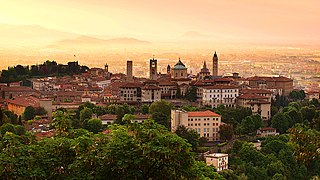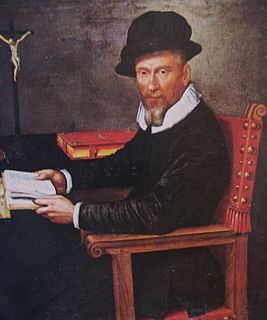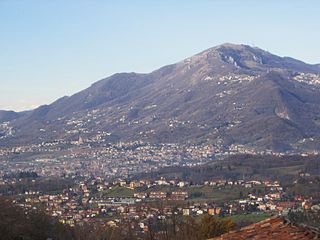| Terno d'Isola | |
|---|---|
| Comune | |
| Comune di Terno d'Isola | |
 Church | |
| Coordinates: 45°41′N9°32′E / 45.683°N 9.533°E Coordinates: 45°41′N9°32′E / 45.683°N 9.533°E | |
| Country | Italy |
| Region | Lombardy |
| Province | Province of Bergamo (BG) |
| Area | |
| • Total | 4.0 km2 (1.5 sq mi) |
| Elevation | 299 m (981 ft) |
| Population (Dec. 2004) | |
| • Total | 6,004 |
| • Density | 1,500/km2 (3,900/sq mi) |
| Demonym(s) | Ternesi |
| Time zone | CET (UTC+1) |
| • Summer (DST) | CEST (UTC+2) |
| Postal code | 24030 |
| Dialing code | 035 |
| Website | Official website |
Terno d'Isola (Bergamasque: Téren) is a comune (municipality) in the Province of Bergamo in the Italian region of Lombardy, located about 35 kilometres (22 mi) northeast of Milan and about 11 kilometres (7 mi) west of Bergamo. As of 31 December 2004, it had a population of 6,004 and an area of 4.0 square kilometres (1.5 sq mi). [1]

The comune is a basic administrative division in Italy, roughly equivalent to a township or municipality.

The Province of Bergamo is a province in the Lombardy region of Italy. It has a population of 1,112,187 (2017), an area of 2,754.91 square kilometers (1,063.68 sq mi), and contains 243 comuni. Its capital is the city of Bergamo.

Italy, officially the Italian Republic, is a country in Europe. Located in the middle of the Mediterranean Sea, Italy shares open land borders with France, Switzerland, Austria, Slovenia and the enclaved microstates San Marino and Vatican City. Italy covers an area of 301,340 km2 (116,350 sq mi) and has a largely temperate seasonal and Mediterranean climate. With around 61 million inhabitants, it is the fourth-most populous EU member state and the most populous country in Southern Europe.
Contents
- Geography
- History
- Points of interest
- Folkloristic events
- Demographic evolution
- References
- External links
Terno d'Isola borders the following municipalities: Bonate Sopra, Calusco d'Adda, Carvico, Chignolo d'Isola, Mapello, Medolago, Sotto il Monte Giovanni XXIII.

Bonate Sopra is a comune (municipality) in the Province of Bergamo in the Italian region Lombardy, located about 40 kilometres (25 mi) northeast of Milan and about 8 kilometres (5 mi) west of Bergamo. As of 31 December 2004, it had a population of 7,042 and an area of 5.9 square kilometres (2.3 sq mi).

Calusco d'Adda is a comune (municipality) in the Province of Bergamo in the Italian region of Lombardy, located about 35 kilometres (22 mi) northeast of Milan and about 14 kilometres (9 mi) west of Bergamo.

Carvico is a comune (municipality) in the Province of Bergamo in the Italian region of Lombardy, located about 35 kilometres northeast of Milan and about 14 km (9 mi) west of Bergamo. As of 31 December 2004, it had a population of 4,355 and an area of 4.4 square kilometres (1.7 sq mi).























